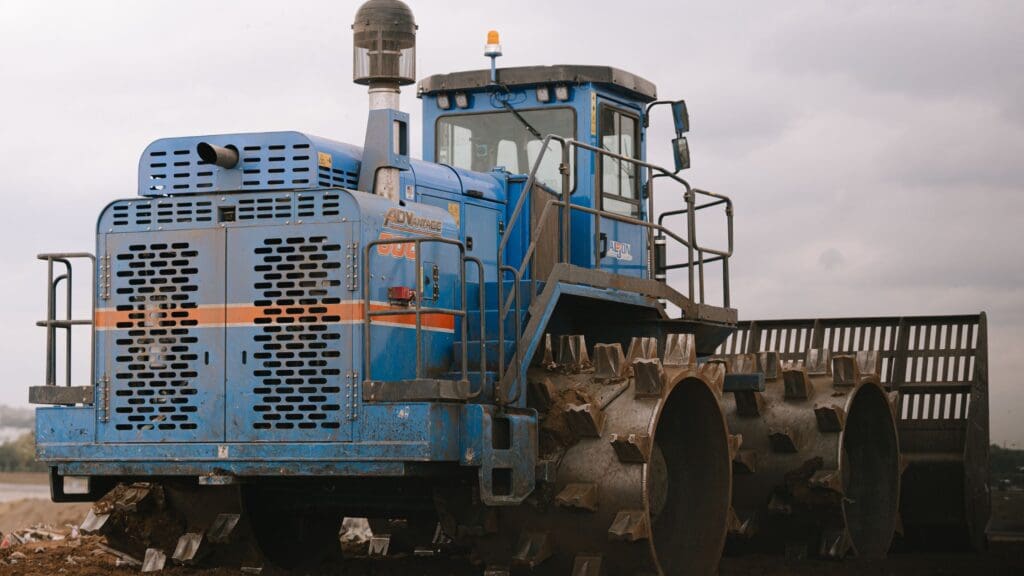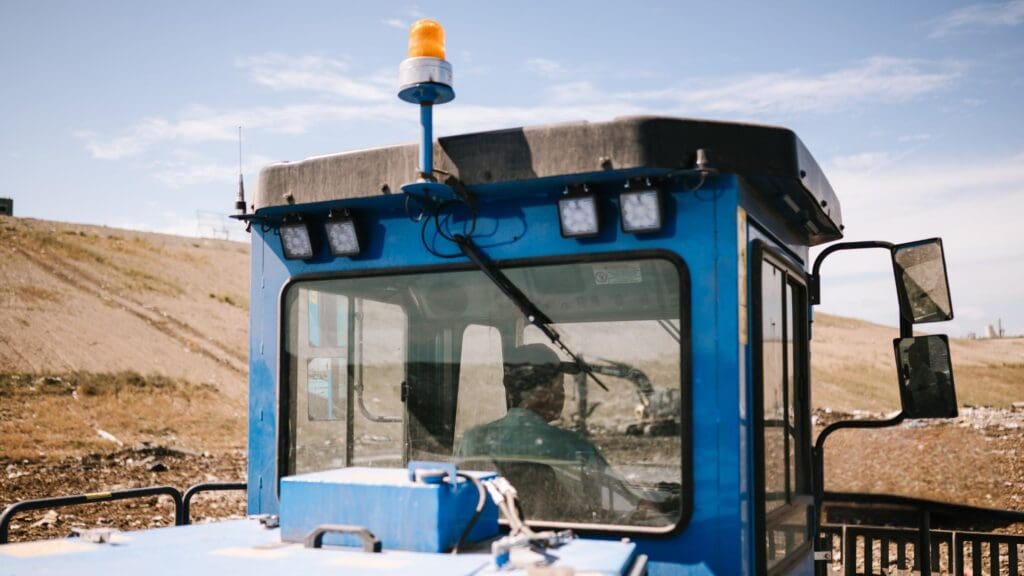In a landfill, space is at a premium. New cells are enormously expensive to clear and build, and they take a lot of time and effort to get approved. The more material that can be compressed into a cell before it reaches its height limit, the longer it can keep working – and stay profitable. This makes “airspace” a key consideration for landfills. By compacting waste more densely, that airspace can be preserved, extends the lifespan of the cell and the landfill as a whole.
1. What Is PLI?
PLI (Pounds per Linear Inch) is calculated by dividing the weight of the compactor by the combined width of all four wheels. This corresponds to the amount of pressure the wheels exert on the surface beneath them, and, thus, how well they will compress the material. Some equipment, such as bulldozers, are built with the opposite goal in mind; dozers need to “float” on top of the surface, not sink down into loose dirt, mud, or waste, so they can keep moving without interruption over rough terrain. Thus, most run on wide tracks rather than wheels to spread out the weight of the chassis and attachments.
Landfill compactors need to do the opposite: sink down onto the layer of loose waste and debris beneath them and compress it without getting stuck. Four optimized, cleat-covered wheels help translate the weight of the compactor directly into the material beneath it. Increasing the weight and reducing the width of the wheels will both increase PLI and thus compaction, but if the wheels get too narrow, they are more likely to get stuck or leave a pile of un-compacted material between them. This makes increasing the weight a more reliable way to improve PLI.
2. How Do Compaction Ratios Impact Airspace?
Once a landfill cell is designed, approved, and built, the only limit on the amount of material it can contain is its maximum height. Material can be added to the working face in a variety of ways, ranging from simply running it over with non-purpose-built equipment like bulldozers once or twice to stabilize it to complex, multi-pass pattern, GPS-driven compactor routines. The second may seem like more work, but when you compare the PLI of the two methods, a purpose-built landfill compactor will offer dramatically better compaction ratios, maximizing airspace usage.
Aljon compactors come in three models: the ADV 500, 525, and 600. They max out at ~95,000, 117,000, and 127,000 lbs respectively, for maximum ratings of 490, 598, and 613 PLI. The largest can process up to 1300 tons of material per day, while even the smallest can handle up to 950 tons per day.
These PLI numbers are some of the best in their class across the industry. While higher weight translates into higher PLI (for similar machines), bigger compactors have the added bonus of being able to process more material in a day. Even landfills with smaller daily intake amounts often find that bigger machines are worth it in the long run because of the increased compaction they offer. For long-term benefits, it’s wise to invest in the highest PLI compactor an operation can afford to ensure that a cell’s airspace lasts as long as possible and no space is wasted as air pockets inside the cell.
3. How Can You Improve Landfill Longevity?
Improving PLI increases the amount of material that can fit into a landfill cell, extending its lifespan, but it also preserves the integrity of the cell itself. Air pockets are more than just wasted space; they can create instability as material decomposes, eventually resulting in dips that reduce the effectiveness of compaction down the road. They can also create opportunities for water to seep between compacted material and intrude deep into the cell. This creates safety hazards such as toxic runoff. Most importantly, when these pockets contain trapped oxygen, they become potential sites of ignition and origin points for landfill fires. Because it is difficult to put out fires burning deep within the cell from the outside, cells often have to be dismantled to extinguish them and stop toxic gases from accumulating. Repairing this damage is time-consuming and costly, in addition to halting normal operations for days or weeks while the problem is resolved.
Achieving maximum PLI greatly improves the chances of a landfill reaching its longest possible lifespan and increases overall revenue without having to go through a costly expansion process. Every little bit of added density matters, which is why choosing a landfill compactor with high PLI is so important. Small increases in compaction ratios build up over time and can increase a landfill’s lifespan by years, especially if done from the beginning.



